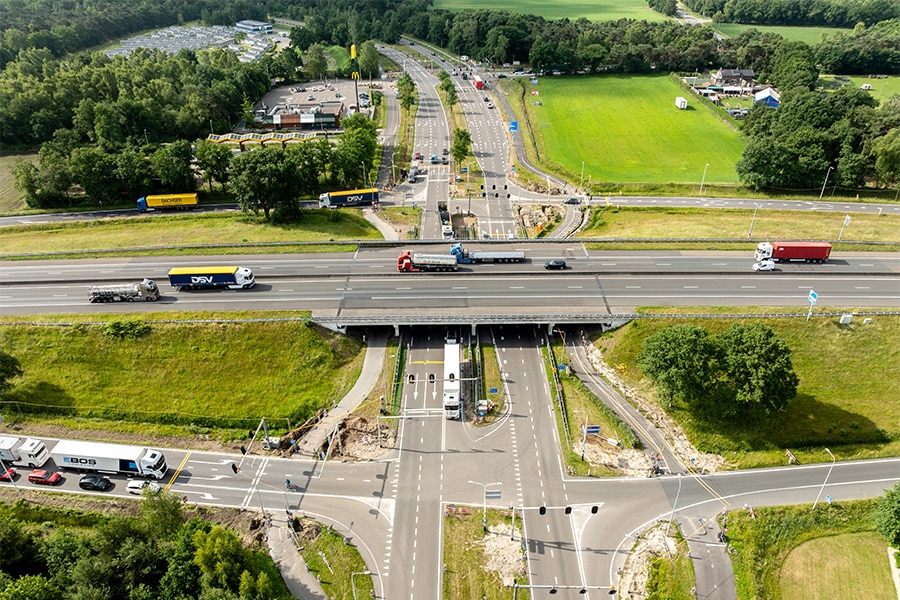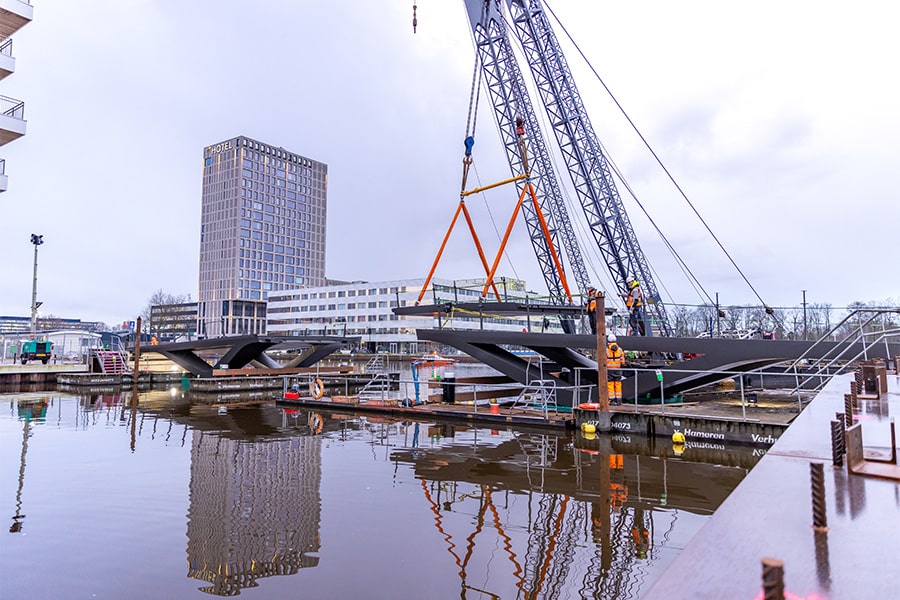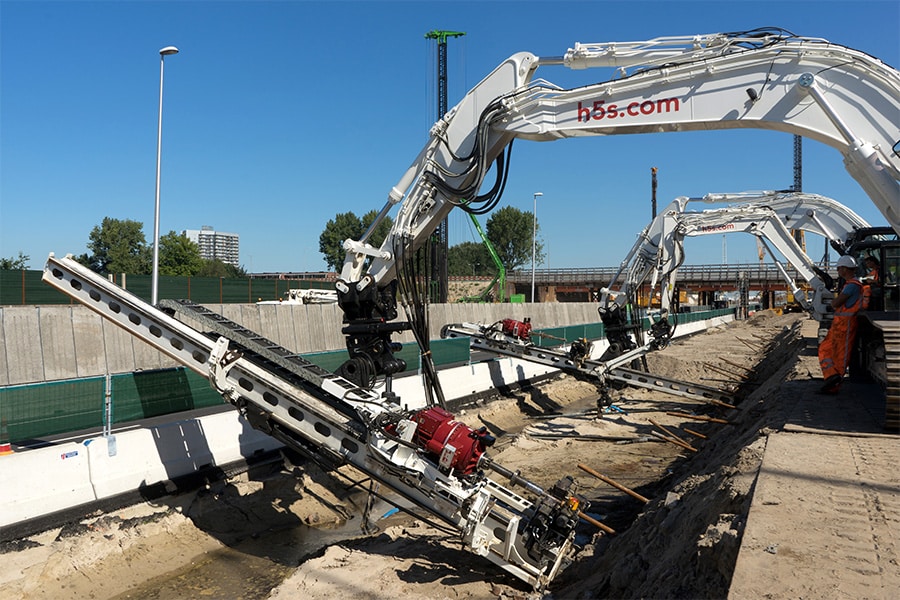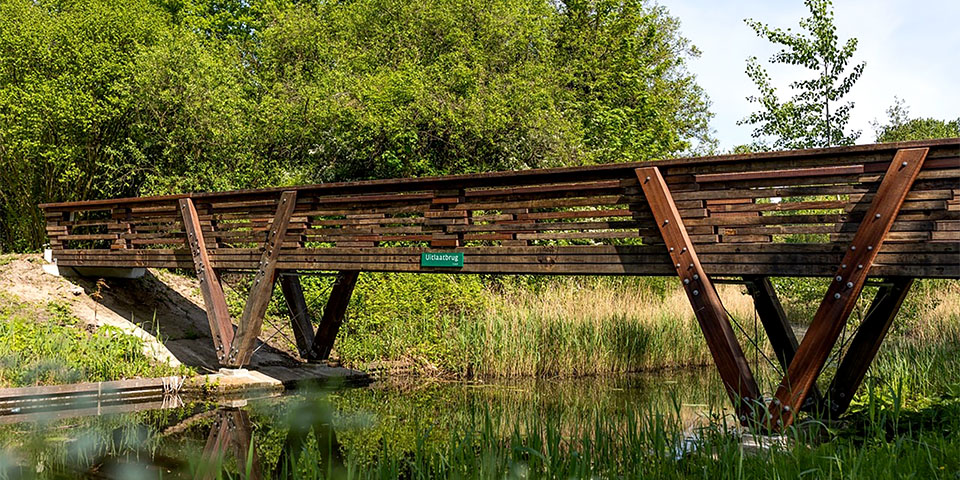
Doubts about longevity and circularity in civil engineering
To meet our climate and circular goals, we must work hard. There are substantial
adjustments, investments and principled choices are needed to make truly sustainable, circular and
going bio-based and thus reducing CO2-emissions and reduce raw material
reduce consumption. The use of wood in civil engineering can play an important role in this. Longevity" or "circularity" are often used as arguments not to choose wood, but research has shown that this is sometimes not the case.
Life of wooden sheet pile walls and shoring longer
Wooden sheet pile walls have been used in the Netherlands since the Romans. The application of tropical walking timber made its appearance since the 1960s. A great deal of experience has therefore been gained with this material. In practice, a service life of 25 years is often calculated for wooden sheet pile walls, while there are very many projects known that are much older. In order to gain a better understanding of the service life of wooden sheet piles in practice, a study was recently commissioned by Centrum Hout/VVNH1). Based on its asset system, the engineering firm analyzed the underlying files of 2,390 projects, with a combined length of over 445 kilometers, and determined their average lifespan. The conclusion is that sheet pile walls and shoring made of wood species with a natural durability class 1 (NEN-EN 335) have an average lifespan of 36.6 years. This is well above the design life of 30 years required by many clients. There is certainly dispersion and worse scoring projects, but projects as old as 60 years were also found. This also demonstrated that an average design life of 25 years, popularly talked about, must be adjusted upward.
The study also looked at the factors that affect service life: a significantly longer service life can be achieved with good detailing and the application of a cover gap, it was found. This extends the service life to an average age of 43 years. Geographic position, soil type and water quality do not seem to have a significant influence on service life. The influence of verge management would require further investigation, as these data are not part of the asset management system.
Save the forest
Another reason why wood is not used is because purchasers, policymakers and consultants are often unsure where wood comes from and whether its use affects deforestation. This concern is understandable, but unnecessary. In fact, sustainable procurement rules have been formulated for wood for (semi)government projects and if they are applied, the forest - especially in the tropics - actually benefits from the use of the wood coming from those forests. Wood certified by FSC, PEFC, Keurhout or STIP, comes from sustainably managed forests and is controlled from "felling to shelf. These certificates meet the Dutch government's sustainable procurement criteria (TPAC). In the Netherlands, over 86% of all wood imported has these certificates and thus comes from sustainably managed forests. Forests not covered by sustainable forest management are at high risk of being destroyed. This is because they do not yield any or enough money. Agricultural crops such as soy, palm oil or cocoa yield much more and faster hard currency. Do we want to preserve forests in the tropics and maintain biodiversity? Then it makes sense to use the sustainably produced wood from these forests, because it provides the necessary income to manage them, combat poaching and support the local population: 'Save the forest, buy sustainably produced wood'.
Getting started with CircularPlus
An important means of achieving environmental gains, preventing scarcity and waste and thus also contributing to climate goals is circularity. The government-wide program 'The Netherlands Circular in 2050' describes the goals to achieve a circular economy. Rijkswaterstaat, the Ministry of I&W and CB23, together with social parties, are working hard to make the circularity of projects and buildings measurable. The main focus here is on the fossil and mineral raw materials, because they pose the greatest environmental burden and have the greatest chance of becoming scarce. There is a strong focus on reuse, recycling, value retention and detachability. Bio-based materials derived from sustainably managed sources are renewable and under that condition will not become scarce. Furthermore, they are already part of a closed (bio)cycle due to their degradability and are therefore already circular. In addition, wood applications in civil engineering also fit into the technical cycle of ''hard'' materials, because they are often reusable, recyclable and ultimately also suitable for energy recovery (bio-refining, thermal recycling) and are often already completely detachable. For example, sheet piles are already widely reused by shortening them and/or repositioning them upside down, or cutting them up and reapplying them to the waterline in combination with a softwood underlay. Bridges are dismantled and new bridges made from the parts, as in Westervoort, Almere and Nijmegen. Multiple piles are in great demand for use in B&U, for example as columns or cladding. Wood can therefore participate in both the biological and technical cycles and is therefore, as it were, CircularPlus.
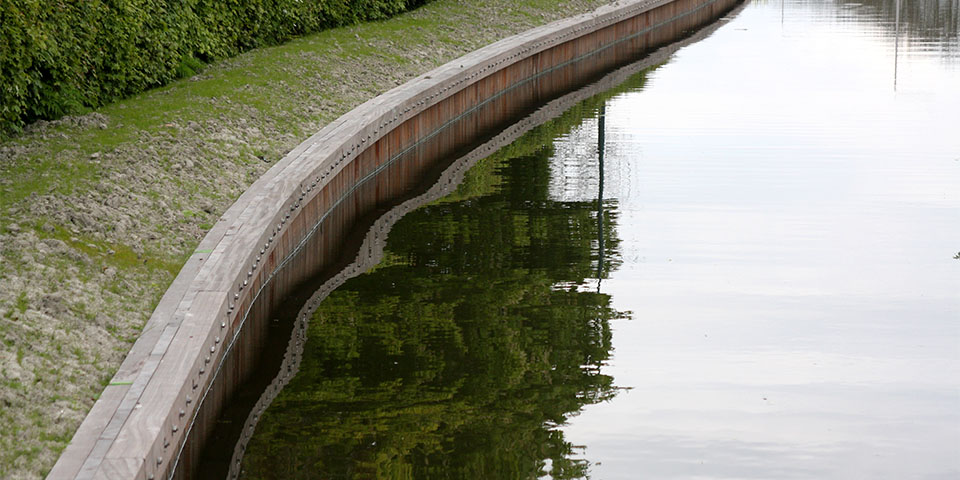
Wooden sheet piles last more than 30 years on average. Photo: Center Wood/EdM.
Wooden bridges, also modular
Another way to contribute to circularity is to extend the useful life. Making structures modular can contribute to this, as they are then more maintainable, easier to replace and less location-bound. This also applies to wooden bridges: research into wooden modular bridges shows that they offer many possibilities. Two students from Windesheim University of Applied Sciences analyzed the dimensions of Dutch wooden bridges during their graduation project, which they conducted at engineering firm Westenberg. They also spoke with several municipalities and other stakeholders, such as contractors and Centrum Hout. After determining the critical factors, they designed a standard wooden bridge. For this, they put together a construction kit with solutions including spacers and a click system for the deck elements. The students expect that by detailing and preserving, the average lifespan of a standard modular wooden bridge will be 60 years, where it is currently 40 years. Follow-up research is needed to test whether the modular concept works well in practice.
Environmental score more than just circularity
A work of art can have many circular properties, but if the final environmental score is high it does not contribute to the goals around climate, and resource and waste management, and therefore does not meet the circular goals. Therefore, it is important to look at environmental burdens (EQI) in addition to using circular criteria. Life cycle analysis (LCA) (1) helps to determine circularity (Module C and D in MPG and DuboCalc), but also gives a better picture of the total environmental impact. For this reason, the timber sector has also commissioned LCAs (2) for sheet piling, shoring, decking, guide rail and road portals. These can be found at www.houtindegww.nl.
1) The study on the life span of sheet piling was funded by the Ministry of Agriculture, Nature and Food Quality, under the Policy Support Research Theme "Climate Envelope Climate-Smart Forest, Nature and Timber.
2) The LCA study of shoring, decking, guide rail and road portals was done in cooperation with the Department of Public Works.

